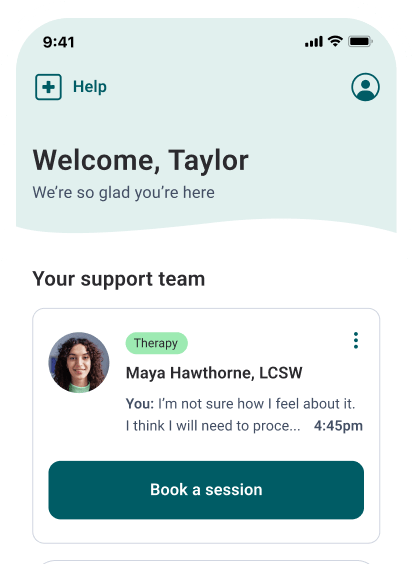Updated on 9/14/2022
Bullying isn’t new, but the way people go about it has changed. What was once reserved for the schoolyard now often occurs at home or at work through online platforms and social media. Cyberbullying affects adults just as powerfully as it does children. Given how prevalent (not to mention damaging) it can be, understanding how to deal with cyberbullying must be a top priority for us all.
Recent research notes that an estimated 37% of teens have been bullied on an online platform, and 30% say it’s happened more than one time. In terms of adult bullying, reputation attacks, online harassment, and other hate campaigns directed at the over-18 population can have serious, dire consequences. In one study, about a quarter of adult respondents reported feeling humiliated or ignored or being the subject of online gossip at least once a week.
Hateful comments or traditional bullying, in general, can make you feel hurt, sad, or angry, leading to feelings of depression, anxiety and causing self-esteem issues. The very nature of online bullying can be much worse than when attacks are in-person. This is in large part due to the permanency of the approach. When it comes to cyberbullying, it can feel impossible to escape. Online bullies can’t see how their cyberbullying victims react or witness the consequences and harm of their actions, which means things might go much further.
Learning how to avoid cyberbullying is easier when you’re armed with our top 9 tips. Keep reading for more information about how to deal with cyberbullying.
1. Don’t Retaliate and Write a Nasty Post in Response
Retaliation will only make the situation worse. Additionally, it’ll be more difficult to make a claim or file a complaint if there’s an electronic tit-for-tat trail of you and the bully going back and forth. You definitely don’t need to take the abuse, but be smart with how you respond to establish a history of the bully’s actions without dragging yourself down in the process.
What you can do
Document instances where a cyberbully is posting, messaging or attacking you or someone you know. Keep an electronic log and screenshot every time the bully posts. Include dates, captures of the bullying, and the site or forum on which the online bullying occurs.
2. Try Not to Take the Rude Comments Personally
Remember: these hateful, hurtful, rude comments have little to do with you. They’re way more about the issues the bully has. It’s not easy to accept, and it definitely doesn’t make things less harmful on your end, but try to keep in mind, hurt people hurt.
It’s in no way an excuse for their abusive behavior (and yes, this is abuse), but it might help you compartmentalize things as you figure out how to deal with cyberbullying attacks. Putting a little bit of a protective shield around your mental health and heart can be a good thing.
“While it’s hard to not take rude comments personally, take a deep breath and remember it’s easy for someone to be rude when they’re typing behind a screen. While it may not feel this way in the moment, the rude comment says more about the person who wrote it than it does about you.”
Talkspace therapist Jill Daino, LCSW-R, BC-TMH
What you can do
Limit your screen time or avoid platforms where your bully is commenting. Block them if you can and report them to whatever monitoring response is available to you. For example, Twitter, Instagram, Snapchat, and Facebook all have online harassment and bullying policies and ways to report abuse.
3. Make a 30-Second Rule
After you’ve written something, but before you post it, step away from the computer or phone for 30 seconds. When you come back, look at the message you wrote and ask yourself how you’d feel if someone wrote it to you. This tactic can be a great way to help prevent you from inadvertently hurting someone else.
“While in the moment, it might feel good to fire back a response, but we’ve all had that moment of regret after we hit send or post. This is the time to step back and think before responding. Oftentimes, the cyberbully is looking for a response, so not giving one can help break the pattern.”
Talkspace therapist Jill Daino, LCSW-R, BC-TMH
What you can do
Make sure you practice this every time you post. As it becomes a habit, you’ll find that you’re able to catch yourself before you — even if it’s unintentionally — say something hurtful.
4. Do Not Reread the Offending Comments
Rereading or continually going back over hurtful posts, nasty messages, or comments will only lead to obsession and further anger. Delete inappropriate or abusive exchanges (but not before you document them).
What you can do
Report the offending comments to a group moderator if possible. Block or unfollow the bully so they can’t comment on your posts, timeline, feed, or page. Lock down your profile so it’s private, and change your privacy settings so that “only friends” can view, comment, or otherwise interact on your pages and profiles.
5. Take a Screenshot for Proof
To avoid cyberbullying, it’s really important that you document the abuse. Cyberbullying has escalated to the point that people take drastic measures to escape the embarrassment and humiliation they feel. The best way to prevent things from going any further is by logging proof of the harassment and reporting it.
What you can do
Start a file or note on your phone or computer and keep screenshots of the cyberbullying exchanges. Log as much information as you can. Document the bully’s name and the date, time, and platform it appeared. Keep this info with each screenshot of what was posted.
6. Block & Report the Cyberbully
You can block a cyberbully from emailing you, looking at your social media profiles, or interacting with you on any online platform. This can be an important step in protecting yourself. It can also be an excellent way to let the cyberbully know that you’re not tolerating their behavior.
In an effort to help people know how to deal with cyberbullying, most platforms let you block people anonymously, but it won’t take long for the bully to figure out that they can’t see or comment on your profile or posts. This can be a good boundary-setting activity.
What you can do
Figure out how you block someone from seeing your profile or commenting on your posts. Take the necessary steps, and don’t forget to report the abuse.
7. Tell a Friend or Adult
Whether it’s you being bullied or you see someone else being harassed, telling someone about the abuse is necessary to prevent things from going any further than they already have.
What you can do
Wondering how to prevent bullying? If you’re in school, tell a counselor, teacher, principal, or someone in administration. If a bullying incident occurs in a workplace, making a supervisor or the human resources department aware of the workplace bullying and abuse is a great place to start.
8. Take a Technology Break Overall
Turn off your phone and computer for a night. If you really want a great break, consider taking a full-on hiatus from social media websites. It doesn’t have to be forever — sometimes, just a few days or weeks off can be a nice escape from the stress.
“We can all benefit from technology breaks, but when cyberbullying is happening, it’s even more beneficial to take a break. Taking a technology break allows you to get a fresh perspective and interact with the world in a different way and to regroup.”
Talkspace therapist Jill Daino, LCSW-R, BC-TMH
What you can do
Commit to one day or night where you do something free from digital technology, like enjoying a nice meal, meditating, going for a walk, reading a book, or taking a warm bath. You can also delete an app off your phone, log out of a profile, or deactivate your account for a bit.
9. Protect Your Mental Health
Mental health is a critical concern when it comes to cyberbullying. While historically, much of the research on the effects of online harassment is focused on the adolescent through teen years, we do know that it can significantly impact mental health at any age. In studies, cyberbullying behavior has been shown to contribute to:
- Negative affective disorders
- Anxiety
- Loneliness
- Depression
- Somatic symptoms
- Suicidal ideation
What you can do
If you or someone you know is dealing with a cyberbully, the most important thing is to get help. Reporting abusive cyberbullying behavior to school administrators and law enforcement, giving yourself time and space from the abuse, and getting mental health help can all be effective ways to navigate cyberbullying.
While bullying is nothing new, cyberbullying has changed the game. Raising awareness about the issue, defining it as unacceptable, and sticking up for those who are bullied are ways that we can address the problem and change things.
Therapy can be a big part of healing from bullying. You can learn helpful coping strategies and techniques to help you stand up to a bully and heal from past abuse. If you’re looking for help or support in navigating a cyberbullying situation, Talkspace is an online therapy platform that makes getting help simple, streamlined, and accessible.
Reach out to Talkspace today to learn more about how to deal with cyberbullying.
Sources:
1. Patchin J. Cyberbullying Data 2019 – Cyberbullying Research Center. Cyberbullying Research Center. https://cyberbullying.org/2019-cyberbullying-data. Published 2019. Accessed July 19, 2022.
2. Campbell C. Punched from the Screen – workplace cyber bullying becoming more widespread – The University of Nottingham. University of Nottingham. https://www.nottingham.ac.uk/news/pressreleases/2012/november/punched-from-the-screen—workplace-cyber-bullying.aspx. Published 2012. Accessed July 19, 2022.
3. Nixon C. Current perspectives: the impact of cyberbullying on adolescent health. Adolesc Health Med Ther. 2014:143. doi:10.2147/ahmt.s36456. https://www.ncbi.nlm.nih.gov/pmc/articles/PMC4126576/. Accessed July 19, 2022.
Talkspace articles are written by experienced mental health-wellness contributors; they are grounded in scientific research and evidence-based practices. Articles are extensively reviewed by our team of clinical experts (therapists and psychiatrists of various specialties) to ensure content is accurate and on par with current industry standards.
Our goal at Talkspace is to provide the most up-to-date, valuable, and objective information on mental health-related topics in order to help readers make informed decisions.
Articles contain trusted third-party sources that are either directly linked to in the text or listed at the bottom to take readers directly to the source.









